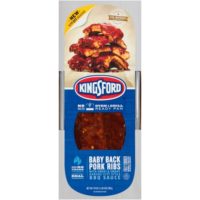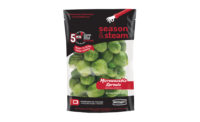IPM Delivers Shelf-Ready Product, Boosts Packaging Line OEE for Frozen Vegetable Processor

The frozen foods manufacturer has met national grocery chain store demands for SRP vegetable products for over two years and maintained their position in the market. Courtesy john shepherd / E+ / Getty Images
When one of the country’s leading producers of bagged frozen vegetables needed a shelf-ready product (SRP) solution in a hurry, Integrated Packaging Machinery (IPM), a provider of industry-specific, value-added food and beverage packaging lines, came to the rescue. IPM not only delivered the required package solution, but also greatly improved the OEE and uptime of the packaging lines in the process.
IPM helped this customer meet the new demand and embed efficiencies with a full-system audit and comprehensive engineering design. Learn how they brought packaging line optimization to this international frozen foods company, resulting in a surge in OEE while meeting nationwide product demands.
The customer approached IPM due to a demand from nationwide grocery store chains for a frozen vegetable shelf-ready product (SRP). Frustrated by the bags of various different products becoming jumbled and mismatched on their freezer shelves, store leaders demanded organized boxes of individual vegetable products, allowing customers to find a specific pack of frozen vegetables without having to sort through a mix of product in the freezer.
To meet this new demand, the manufacturer needed to redesign and reconstruct its existing frozen vegetable packaging lines, with the new design requiring the replacement of the existing case packers and installation of new line controls.
Given the sizable capital investment involved, the customer also requested improvements to system flexibility and overall equipment effectiveness (OEE) of the redesigned and reconfigured packaging systems.
The goals of the frozen vegetable SRP project were to:
- Change the packaging equipment to enable production of the required SRP case.
- Increase overall production system flexibility and redundancy.
- Increase OEE on the system.
With an OEM-neutral partner, the manufacturer could maximize production goals and achieve optimized packaging line automation.
Auditing Processes and Packaging Lines
IPM began with a thorough audit before custom-designing the engineering solutions. Engineers spent six months observing the existing systems, talking with the entire frozen food team, from machine operators and maintenance personnel to supervisors and managers, and developing proofs of concept. IPM also audited the system programming to understand the revisions that would be required to successfully incorporate the new equipment and design parameters.
A reconfigured packaging system was engineered, designed and commissioned that incorporated three Ishida scale/Hayssen bagger combinations feeding two Douglas case packers, using IPM’s proprietary bag merging system. IPM engineers integrated enterprise-scale project intelligence to connect the lines for maximum speed, throughput and efficiency.
To fulfill the system flexibility and redundancy requirement despite limited available floor space, IPM designed a solution that merges the bags from three baggers into downstream lines feeding two case packers. Through advanced digitalization and use of smart conveyor technology, the design team was able to modulate bag flow between the downstream equipment based on different upstream and downstream scenarios, keeping the line filled with product to maximize OEE. The final integration also balanced the lines and allows all three baggers to run at reduced speed if only one case packer operated.


Because the new layout requires the bags to be rotated to feed the new case packers, the IPM design also incorporates a 90-degree transfer to change each bag’s orientation.
These significant system changes required lengthy testing and adjustment due to the inconsistency of the bags and the potential for condensation on the outside of the bag of frozen product. IPM was able to set this up and closely replicate these scenarios in our shop before installing them at the customer’s facility. This greatly reduced downtime during start-up and streamlined the installation process.
The solution involved several other key elements. Previously, the scales could drop many times in a row if they were full, and there were also idle periods when the scales were waiting for product. IPM’s new controls ensured more consistent and efficient operation.
Maximized Floor Space, OEE and Uptime
The integrated packaging solution allows the line to run continuously at a higher throughput and increases the line's uptime. If one of the case packers goes down, the system automatically diverts all bags to the operational case packer, adjusting the scale/bagger speeds to continue the operation at a reduced rate until the full system is back online.
Because neither the product itself nor the floor space available were conducive to adding bag accumulation, IPM focused on keeping product flowing at all times to maximize OEE. One requirement was merging the bag conveyors together as they fed the case packers. That required tight control of conveyor speeds to achieve a specific required product gap at different bagging speeds. The three lanes were synchronized to consistently load the vegetable bags onto the case packer belt. IPM’s expertise with smart conveyors and intricate line control programming were essential here.

IPM installed sensor scales, SKU trackers, and inspection equipment to identify defective packages. The machines automatically identify packages that are outside permissible weight and temperature ranges. Rather than pausing or stopping the entire line to remove such defective product, the line automatically rejects and removes them without interrupting the operation. The solution keeps everything running consistently and ensures that every bag meets product quality requirements.
Before the installation of automatic sensors and SKU trackers, defective products would cause the line to stop, negatively affecting production and OEE. The frozen vegetable bags would melt or frost on the conveyors, leading to expensive and time-consuming manual clean-up. It also curbed the momentum of the process and the work team.
IPM designed and integrated the new lines and installed the new machine within an existing area with limited floor space. The installations maximized the use of the available square footage while optimizing the system’s coordination with the rest of the plant.
Production-safe barriers and temporary walls were erected to ensure food safety and quality while keeping the surrounding lines running during installation.
From start to finish, IPM’s entire strategy development, concept generation, design and implementation of the customer requirements for this project took 12 months, with implementation in two facilities. After installing new machines and integrating lines, the manufacturer realized substantial gains in several business areas from the SRP frozen vegetable project.
“Before the improvements we made with this project, the customer’s lines ran OEEs between 40% and 48%,” said Phil Lamb, account manager at IPM. “Since optimizing the new lines, OEE is now consistently between 77% and 83%. Higher OEE leads to reduced downtime, less product waste, reduced energy costs and higher production capacity.”
The manufacturer has met national grocery chain store demands for SRP vegetable products for over two years and maintained their position in the market.
Looking for a reprint of this article?
From high-res PDFs to custom plaques, order your copy today!





